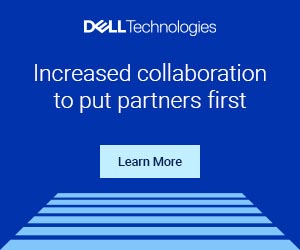Dell EMC VxRail is a hyper-converged infrastructure (HCI) appliance that was first launched six years ago. It was created to serve the needs of virtual desktop infrastructure environments, remote office settings, private clouds, and distributed small- and mid-size enterprises. As such, it included compute, storage, networking, and virtualization resources all in a single device.
VxRail was brought to market as the first and only HCI solution jointly engineered with VMWare—it includes VMWare VSAN, vSphere, and vCenter software running together. A major benefit to this single vendor integration, if you will, is that customers enjoy the simplicity of one line of support from the hypervisor through to the hardware. Another key feature setting this appliance apart is the VxRail HCI System Software which consists of multiple, integrated software elements working to extend native VMware capabilities to deliver a seamless, automated, operational experience, and ensuring continuously validated states.
With Dell and VMware’s vast compilation of collective innovations achieved over the past five years, the companies have been able to extend the performance, simplicity, and functionality of VxRail considerably.
Key features that Dell EMC VxRail has come to be known for since its initial launch include:
• Ease-of-use with centralized management capabilities and VxRail HCI System Software
• Simple integration of cutting-edge solutions from today’s technology leaders; these products include Intel Xeon processors, NVIDIA GPU, Dell EMC storage arrays and more.
• Guaranteed quality, as all devices are preconfigured and tested.
• Excellent flexibility, as VxRail products are suitable for a wide variety of applications and workloads.
A look back
Six years ago, VxRail was brought to market as the first and only HCI solution jointly engineered with VMWare. Today, it remains the only one. With constant innovation focused in and around resiliency, Dell Technologies and VMWare have continually extended the performance, simplicity, and functionality of VXRail over the years to ensure availability and confidence for every workload.
Take a look at some of the milestone innovations VxRail has realized over the years:
2016:
• 1st and only jointly engineered HCI appliance with VMware
• Pre-integrated updates to vSAN 6.2 and all flash nodes
• Introduction of the HCI System Software
• Learn more: EMC and VMware Introduce Hyper Converged VCE VxRail Appliance Family
2017:
• Introduced 14th Generation PowerEdge to VxRail
• In-cluster, mixed generation node support
• Learn more: Dell EMC Industry Leading Hyper Converged Infrastructure Solutions Gain PowerEdge Boost
2018:
• 30-day synchronous release commitment with all major VMware vSphere
• Integration of VCF on VxRail for hybrid cloud
• Pre-integrated updates to vSAN 6.7
• Introduction of 2-node edge clusters
2019:
• 1st All NVMe nodes (E560N & P580N)
• SAP HANA certification for 4 socket all NVMe nodes
• Graphics Processing Units (GPU) added to P & E Series
• Learn more: Dell Technologies Transforms IT from Edge to Core to Cloud
2020:
• Introduced the ruggedized D Series
• Improved security with vCenter RBAC and FIPS 140-2 for VxRail Manager
• Learn more: Dell Technologies Brings IT Infrastructure and Cloud Capabilities to Edge Environments
2021:
• Satellite nodes for single node use cases
• Dynamic nodes to enable asymmetric scale
• Integration of the 15th Generation Dell PowerEdge
• Self-install, node re-imaging and more automated Lifecycle Management
• Learn more: Reimagine HCI with VxRail
A look at today
To understand the constant innovation that Dell and VMWare are applying to VxRail, one need not look any further than the improvement than the improvements achieved with the refreshed 15th generation PowerEdge architecture. This design is just 1/3 the footprint of previous 13th generation PowerEdge, yet delivers 50% more performance
1.5X more performance from a 4 node 15th generation cluster versus a 12 node 13th generation cluster
• +4.4X total performance per node
• 33% less heat output, power, and cooling
In terms of how this benefits the user, the updated architecture can consolidate more workloads, reduce application licensing costs, and thus lower the overall cost.
There is also the reliability factor that must be considered with these constant updates. One thing that Dell and VMWare have worked toward is the assurance that availability and confidence is achieved with each and every workload. Over the last eight quarters VxRail customers report greater than 99.9999% uptime
A look ahead
Whether you are transforming a customer’s datacenter, integrating multicloud, or helping expand to address edge opportunities, VxRail provides a complete landscape of configurable HCI platforms so that you customers can focus on their business. And with such a long, established history of joint integration between Dell and VMWare, which has led to cutting-edge engineering and innovation being incorporated into the VxRail product, customers can rest assured their investment into this HCI solution – the only one of its kind – will not only serve them well today and tomorrow, but years down the road.
*Based on Dell Technologies field performance (July 2021). AD# G20000255
**IDC White Paper: The Business Value of Dell EMC VxRail and VMware Cloud Foundation on Dell EMC VxRail. November 2020.





















